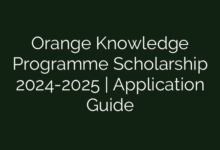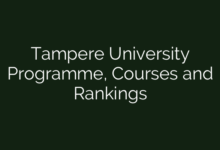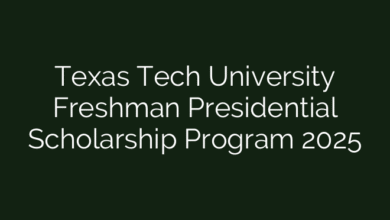Understanding the difference between Teaching Content and Teaching Thoughts
Up until now, I can bet that you didn’t know the difference between teaching content and teaching thoughts. And even if you knew, this article is about to provide you with more insights you didn’t know existed before.
In today’s article, we’re going to be looking at the concept of teaching, teaching content, and teaching thoughts: the pros and cons, the difference between the two, which concept is the best, and what can be improved upon. Let’s start with the concept of teaching.
The concept of teaching
A few years ago, when you ask a child the big question “What would you like to be when you grow up?”, most often than not, they mention the big professions such as Doctors, Lawyers, and Engineers.
No one wanted to be a teacher because they thought a teacher is not usually paid well since their reward is in Heaven. Children also thought teaching was not as classy as those other professions previously mentioned, and a whole lot of other misconceptions on their minds. If only more people knew what teaching entailed, people would be more interested in teaching than in any other profession.
Back to the original discussion, Edmund Amidon defined teaching as an interactive process, primarily involving classroom talk which takes place between teacher and pupil and occurs during certain definable activities.
There’s also another concept of teaching that is widely accepted in our world today which states that:
“To teach is to engage students in learning; thus teaching consists of getting students involved in the active construction of knowledge.
A teacher requires not only knowledge of the subject matter but knowledge of how students learn and how to transform them into active learners.
Good teaching, then, requires a commitment to a systematic understanding of learning. The aim of teaching is not only to transmit information but also to transform students from passive recipients of other people’s knowledge into active constructors of their own and others’ knowledge. The teacher cannot transform without the student’s active participation, of course.
Teaching is fundamentally about creating the pedagogical, social, and ethical conditions under which students agree to take charge of their learning, individually and collectively”.
[ Education for judgment: The artistry of discussion leadership. Edited by C. Roland Christensen, David A. Garvin, and Ann Sweet. Cambridge, MA: Harvard Business School, 1991. ]
Based on the school of thought I have presented, there’s something constant between both of them: “learning and interaction”.
As someone who is reading this, ask yourself “What did I learn?“, “What did I interact with in school?“, Content or thoughts?
And since teaching is continuous, you can answer this question, by juxtaposing it with your present.
Whilst you’re on that, let us jump quickly to teaching content and teaching thoughts: the pros and cons.
Teaching Content and Thoughts: The Pros and Cons
- Basically, teaching content requires teaching from a curriculum, which oftentimes captures some irrelevancy.
I remember vividly an incident that happened whilst I was in secondary school. A particular student who wanted to become a Medical Doctor always failed woefully at Physics no matter how much he tried. One time like that, his mum barged into school. In her own words “I know the son I gave birth to, I know he is brilliant, so why does he keep failing Physics?”
After all the back and forth, this parent asked the school to scrap Physics from the curriculum. He’s going to be a Medical Doctor, so what does he need that subject for anyway?
Now that I am wiser, I understand the point this parent was trying to make. But if we believe that no knowledge is a waste, then we can also believe that Physics will come in handy for a Medical student too. That’s the flip side many people don’t see.
- Another thing teaching content also does is recycle information.
There’s not so much difference between Anatomy in the 60s and what it is now. Most of this content is recycled information, there’s nothing new to look forward to. This is by no means a general statement, but this is true most of the time. Thank goodness for inventions and discoveries, we might just be stuck forever.
On the other hand, what teaching thoughts do is t open learners to critical thinking. And since teaching thoughts probes the why and the process of things, learners can ask more questions and hereby deepen their insights. I dare to say that teaching thoughts are the mother of inventions and discoveries.
Since this sounds great, there’s a side to it that most people are not open to yet. In the process of questioning the why of things and seeking answers to questions, the answers or the results might take many years to unravel, thereby putting a pause on things people ought to have moved past.
Conclusion
If we look at these concepts critically, personally, the best approach would be to combine both processes, that is, teaching content and teaching thoughts. It will enable anyone (since we’re all students of life) to learn more since it’s a combination of learning thought patterns and curriculum.
This approach is something that every teacher, mentor, and thought leader should employ moving forward, and I’m sure that by this, we’ll get the results that we want.
FAQs
What is the difference between teaching content and teaching thoughts?
Teaching content refers to the delivery of facts, information, and subject-specific knowledge to students, while teaching thoughts focuses on nurturing critical thinking, creativity, problem-solving, and the ability to form independent ideas. Content is about “what to know,” while thoughts are about “how to think.”
Why is it important to distinguish between teaching content and teaching thoughts?
It is important because content equips students with knowledge, but teaching thoughts empowers them to apply that knowledge in real-life situations. Without the ability to think critically, students may simply memorize facts without understanding or innovation. Balancing both ensures a more holistic education.
Can teaching content exist without teaching thoughts?
Yes, but it is often limiting. Teaching only content can lead to rote learning where students recall information without deeper comprehension. Without teaching thoughts, learners may lack the ability to question, analyze, or apply knowledge in meaningful ways beyond exams.
How can teachers effectively combine teaching content and teaching thoughts in the classroom?
Teachers can combine both by first presenting key information (content) and then engaging students in discussions, debates, projects, or problem-solving activities that require them to think critically (thoughts). Using open-ended questions, case studies, and real-life examples bridges the gap between knowledge acquisition and intellectual development.






![University of Oxford Skoll Scholarship for International Students [Fully-funded]](https://britishvisa.com.ng/wp-content/uploads/2024/01/University-of-Oxford-Skoll-Scholarship-for-International-Students-Fullyfunded-390x220.png)

